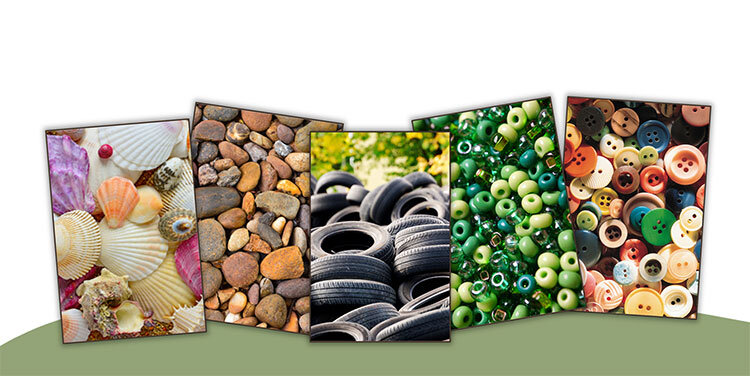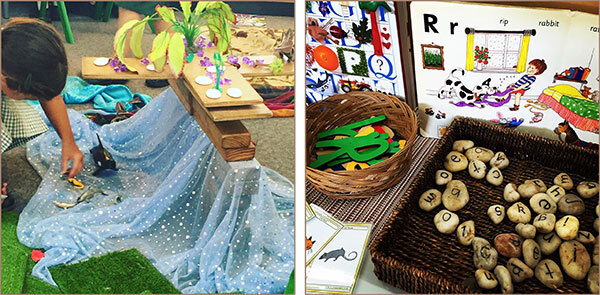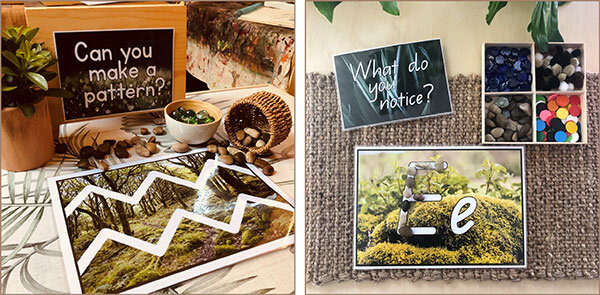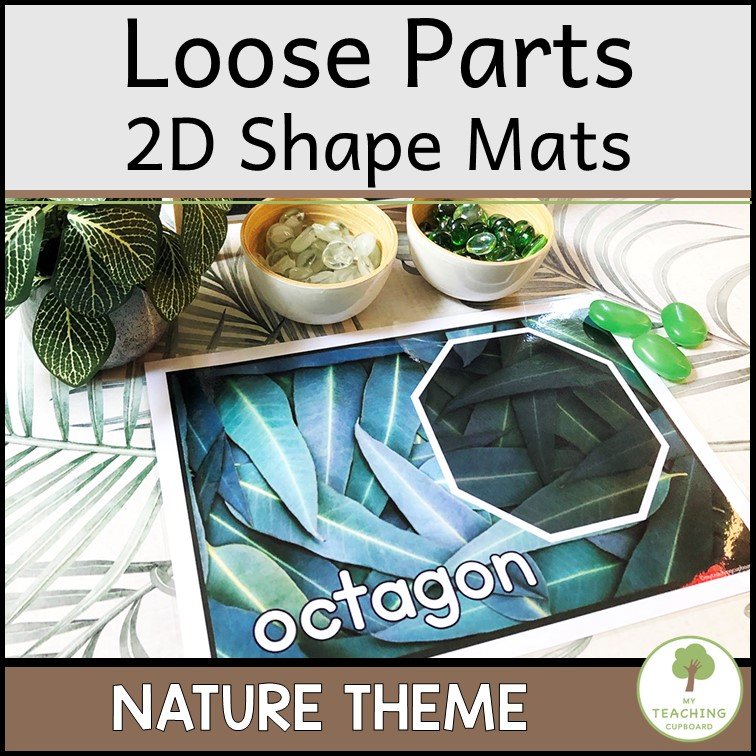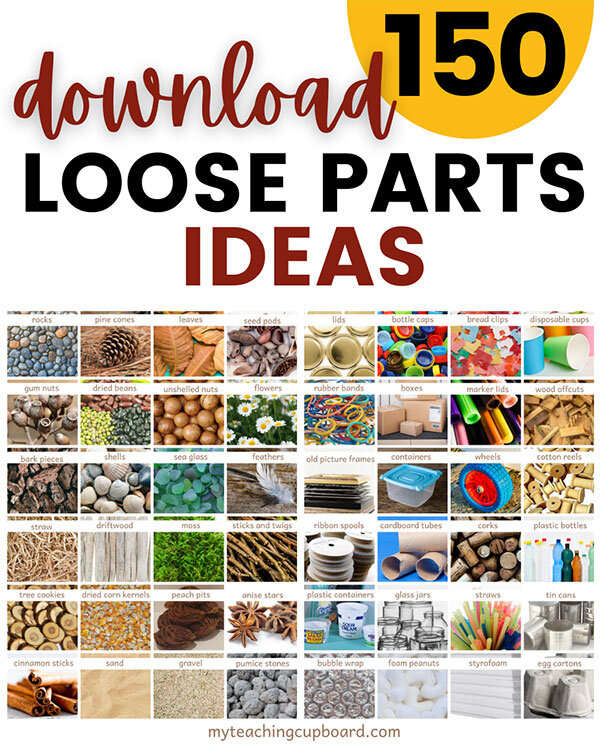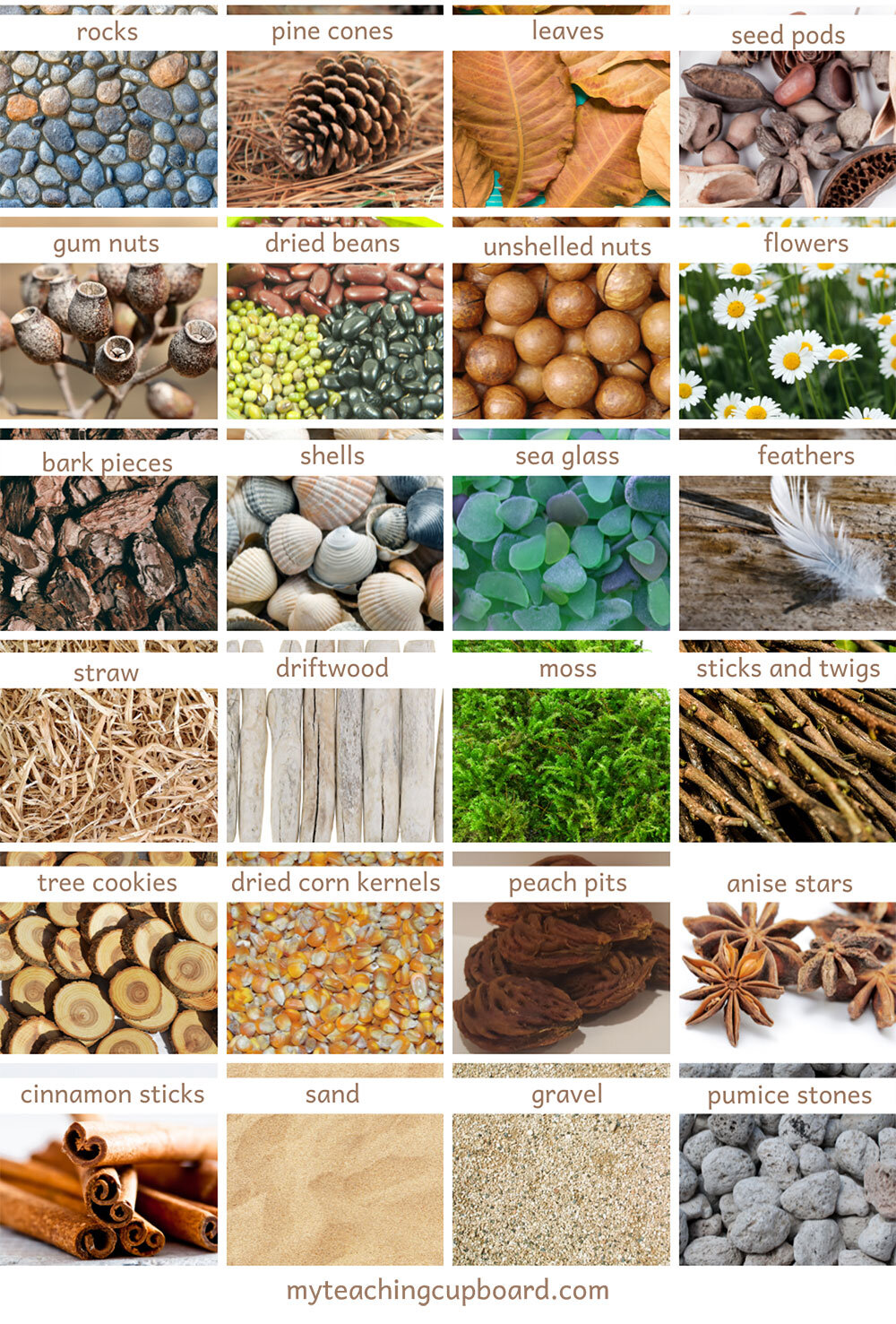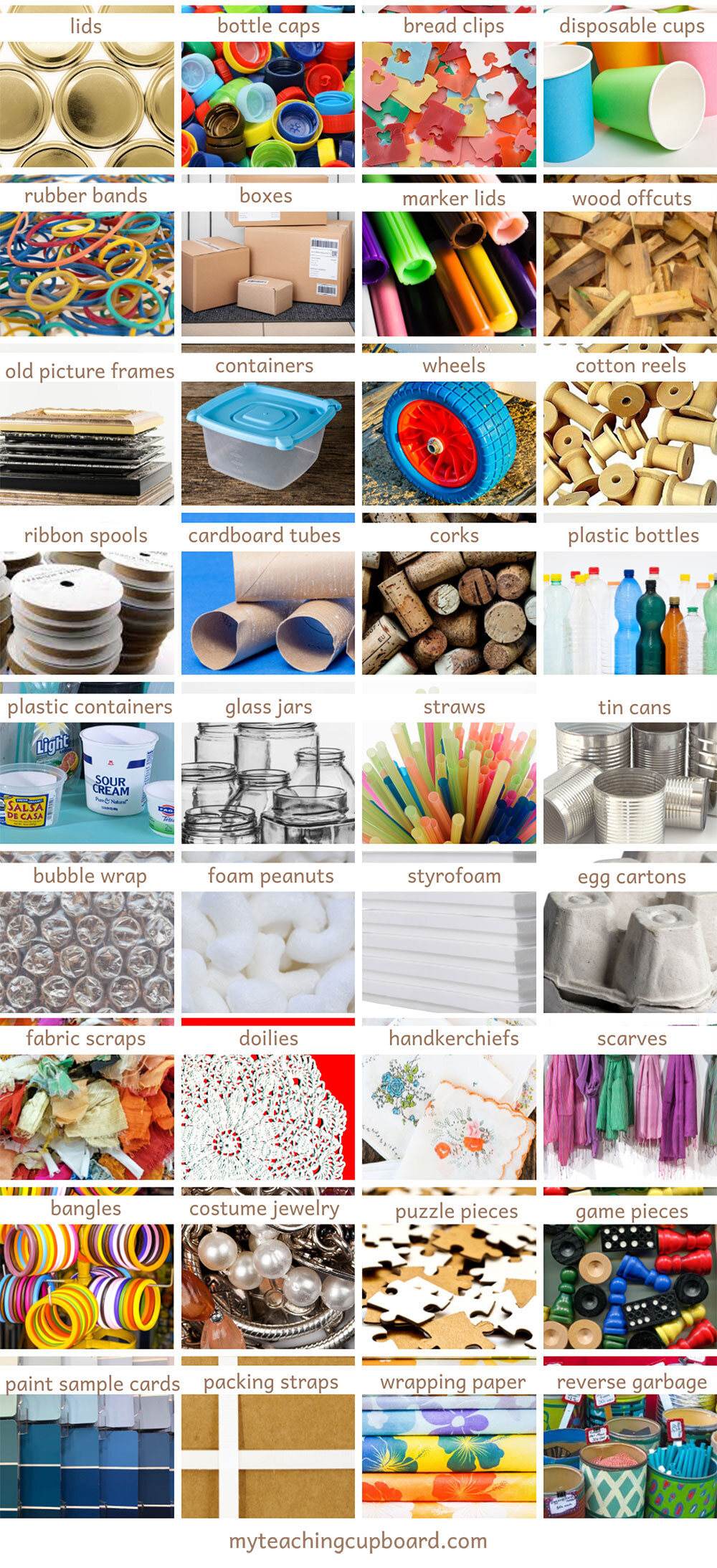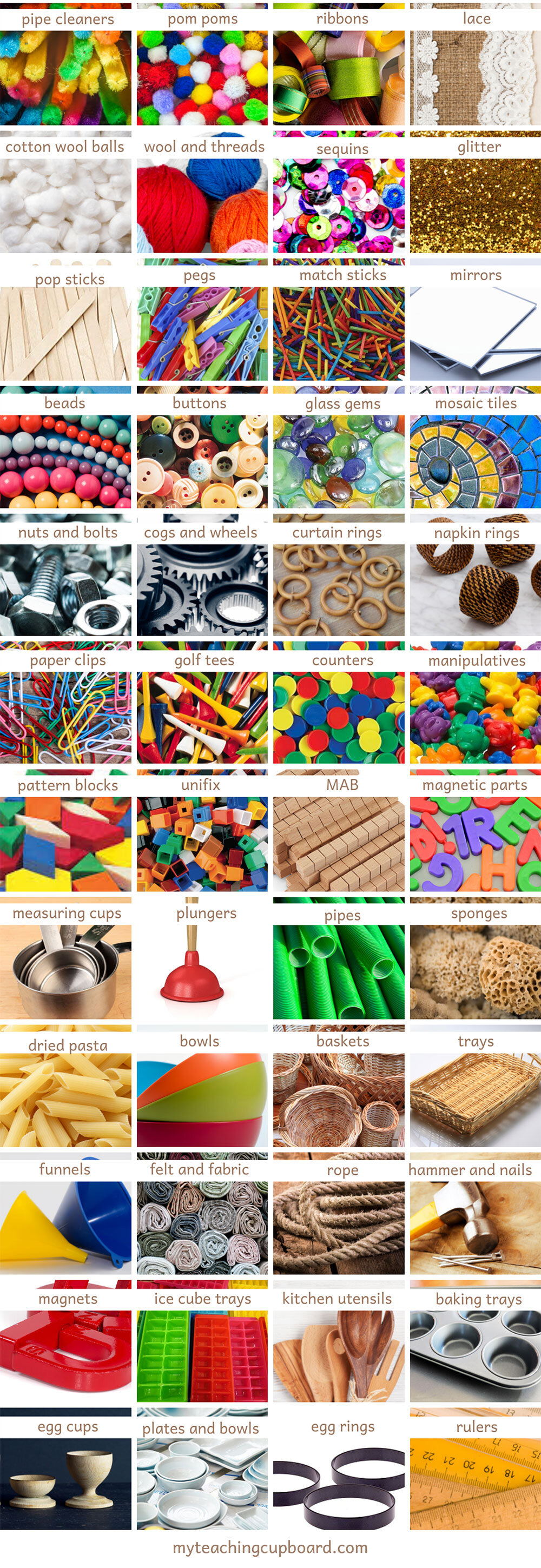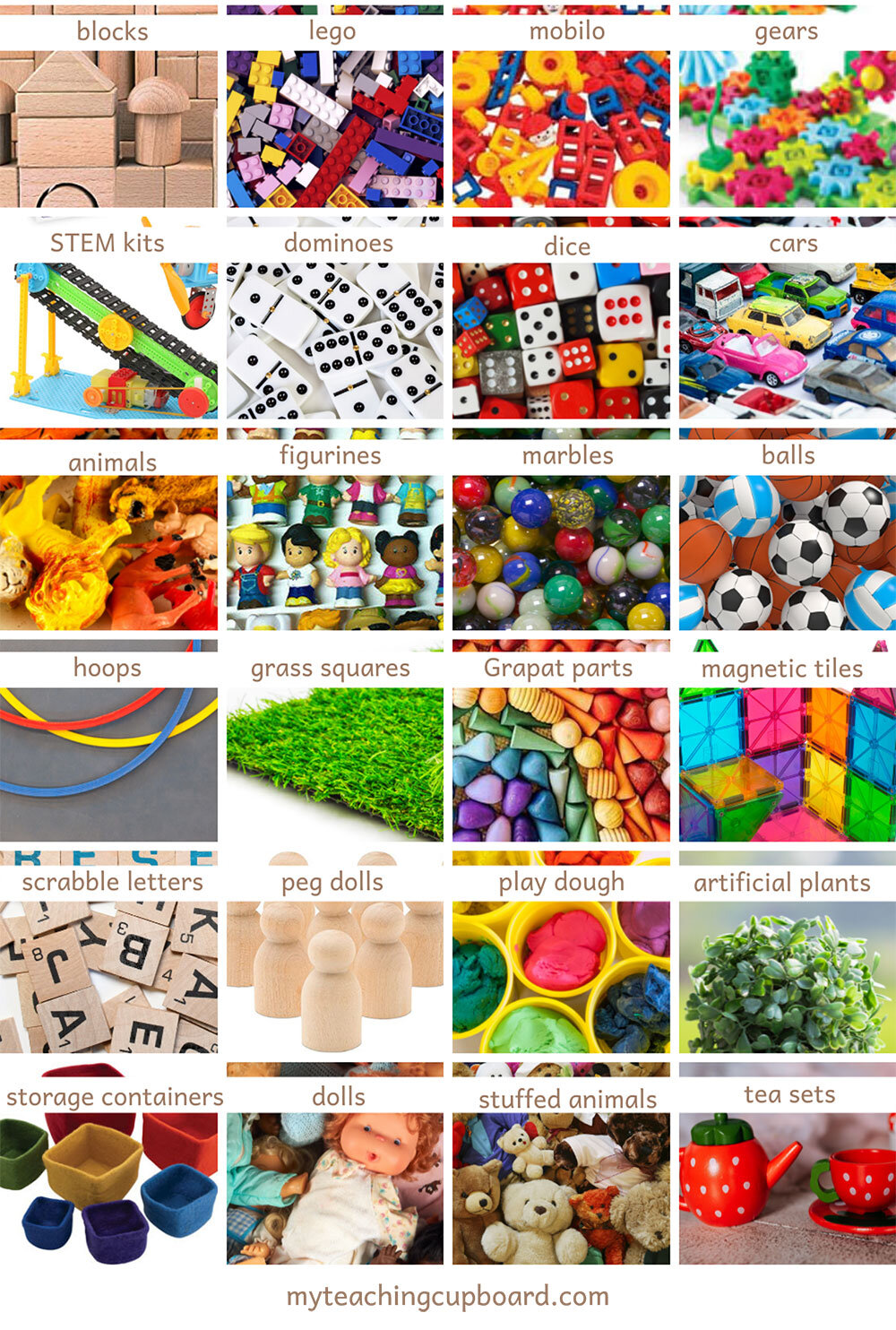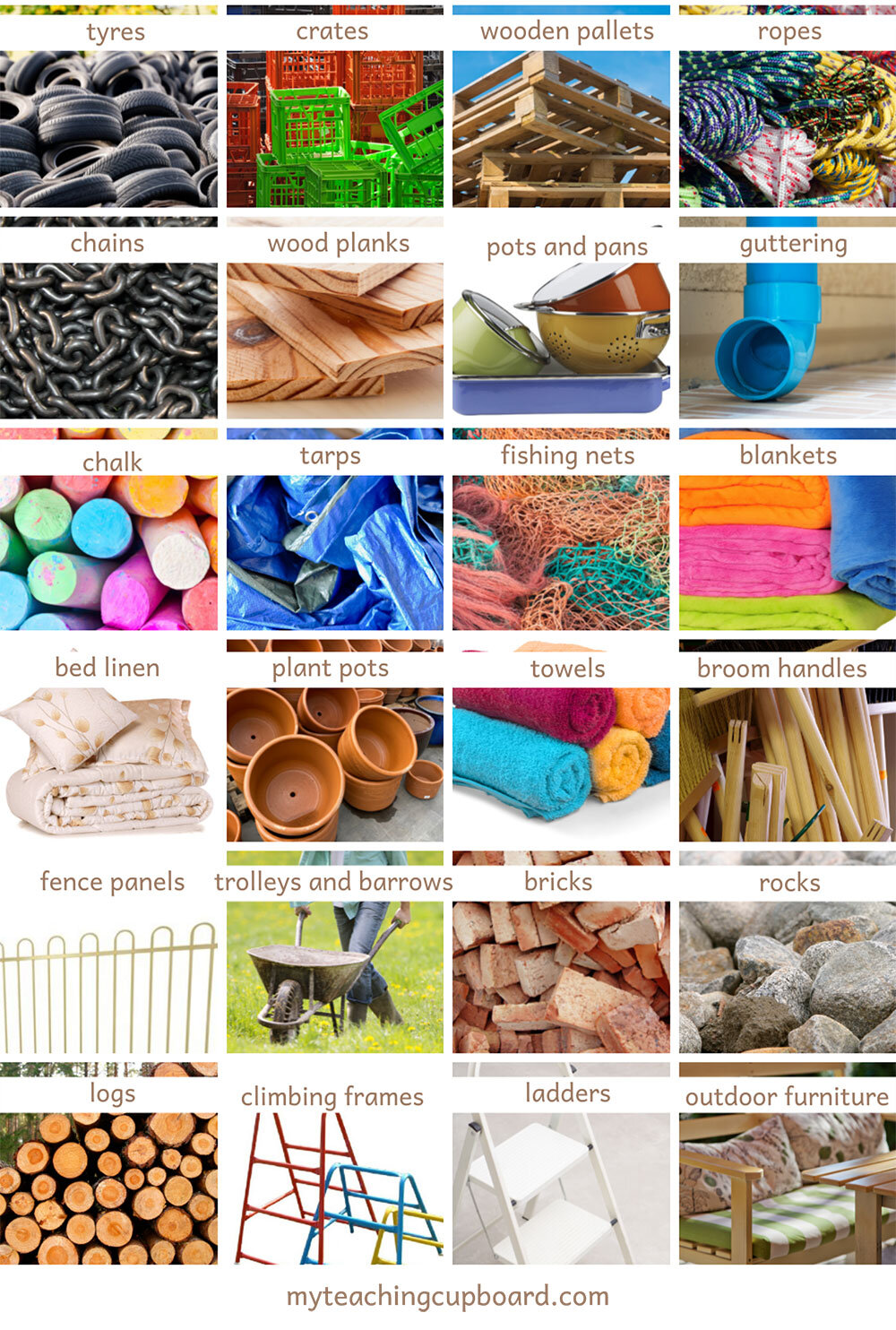Loose Parts Resources
In this blog post you will discover what loose parts are and why you need them in your classroom. You will also find a list of over 150 loose parts resources you can use to set up age appropriate investigation areas and learning invitations in your early years setting.
Have you ever stood in front of a newly set-up play space thinking,
Is this enough?
Is it purposeful?
Are the kids going to do anything with it?
Loose parts play is one of the most powerful ways to engage children in creative, open-ended learning. But building a collection that’s both intentional and manageable can feel overwhelming. With so many materials, ideas, and different ways to set things up, it’s easy to feel stuck. Or worse - your beautifully arranged learning invitation gets ignored entirely while children flock to the block corner for the hundredth time. Sound familiar?
What teachers really need is a simple way to curate an inspiring and functional loose parts collection. One that sparks children’s imagination, meets curriculum goals, and doesn’t require hours of prep.
In this post, you’ll learn what loose parts are, how they support early learning, and how to curate a meaningful loose parts collection - without breaking the bank or losing your mind.
Whether you’re searching for a loose parts resources list, natural loose parts resources, or ideas for using loose parts outdoors, this guide will help you curate, organise, and use these open-ended materials effectively in your play-based classroom.
What are Loose Parts?
In 1971, architect Simon Nicholson developed the theory of loose parts. This term describes any open-ended materials which encourage creativity and exploration in children. Children can manipulate and use loose parts during investigative play experiences. The key is the open-ended nature of loose parts.
Loose parts can be natural like shells or man-made like buttons. They can be very small like beads or very large like tyres. Loose parts can be new or old, recycled or intentionally purchased.
Loose parts should be thoughtfully added to your investigation areas. Teachers very often add printed learning provocations to the loose parts to suggest possible learning scenarios. By observing your children, you will gain insights into their individual learning interests and needs. Your observations should then guide which loose parts you should add to your investigation areas.
Loose parts are suitable for individuals, small groups and the whole class. They can be offered inside the classroom and outside in the playground.
The main thing to remember about loose parts is that they can be used in a variety of ways and for numerous purposes. Your loose parts collections can be completely random, or you can curate collections around specific themes. For example, items could be all the same colour, all come from the kitchen, are all soft materials or are all found outside.
Loose parts can and should be added to any learning invitation for children to practice and build on their developmental skills.
Loose parts are open-ended materials that foster creativity, problem-solving skills, and deep learning across all areas of early childhood education. Whether used in loose parts art, loose parts patterns, outdoor classrooms, or numeracy provocations, they support imaginative play, cognitive development, and critical-thinking skills in young children.
Simon Nicholson believed that “the richness of an environment in terms of its loose parts determines the creativity and inventiveness of the people using it.” This idea—that the environment is a key driver of learning—continues to influence play-based educators around the world.
Maria Montessori also championed the use of hands-on, open-ended materials, emphasising that children thrive when they are given the freedom to manipulate, explore, and discover using their own ideas.
The Reggio Emilia approach takes this further by viewing materials as a ‘third teacher’ - inviting children into meaningful, self-directed exploration.
👉 As teachers, it’s our job to carefully curate a collection of loose parts that sparks curiosity, supports the curriculum, and reflects the children’s interests.
Benefits of Loose Parts to Learning
Including loose parts in your learning provocations will help you to create rich learning experiences. Loose parts play develops skills across the whole curriculum – literacy, maths, art, science, and more.
In fact, studies show that when young children are engaged in open-ended, hands-on learning experiences, they demonstrate higher engagement, longer attention spans, and increased cognitive flexibility (Harvard Center on the Developing Child, 2021).
If you are interested in providing learning provocations which teach early literacy and numeracy skills and concepts, you might like to check out my loose parts play mats. They are sure to get your students engaged and learning with loose parts! Best of all? These hands-on activities are LOW PREP!
Just print the mats and add your loose parts for instant educational learning invitations.
📌 If you’re looking for structured ways to incorporate loose parts in literacy and numeracy, check out my best-selling Loose Parts Play Mats Bundle!
💡 Includes loose parts alphabet mats, number mats, shape mats, and pattern mats at a discount - you’ll have everything you need to support curriculum-linked play-based learning.
Loose parts play is also cross-curricular/integrated because so many skills will be present in any single learning experience. Some educators think the word “play” suggests otherwise but so much learning really does happens when children explore loose parts.
Through loose parts play, children naturally engage in spatial awareness, language development, critical thinking, social skills, creative expression, and sensory exploration. It’s a holistic type of play that nurtures both the heart and the mind.
Providing opportunities for your children to play with loose parts allows them to consolidate their thinking and extend their learning through a developmentally appropriate pedagogy. Loose parts play has benefits, both for the child and the teacher. You can read more about the Benefits of Loose Parts Play HERE on this blog post.
According to the Walker Learning Approach, “sustained shared thinking” occurs when children and educators engage in meaningful, extended conversations during play.
Loose parts provide the perfect context for this kind of thinking - rich, imaginative, and driven by children’s interest.
You will notice your children will use loose parts to..
…make, build, experiment, invent, combine, redesign, pull apart and put back together, carry around, manipulate, put into patterns, sort, measure, use as visual representations - and sometimes, they’ll do all of those in the same 15-minute session.
Whether it’s using seed pods to represent families in dramatic play, popsicle sticks to build imaginary traps for dragons, or cardboard boxes transformed into an outdoor café - loose parts support the magic of loose parts learning.
OVER 150 Engaging Loose Parts Ideas for Your Classroom
Loose parts can be sourced from the natural world or man-made. They can be large or small. To promote scientific and mathematical thinking, quality loose parts will have differing attributes of size, colour or shape.
I have compiled a comprehensive list of over 150 different loose parts you can use in your classroom so you can easily get started with loose parts play.
If you would like a copy of this list, you can download a printable version HERE in my FREE Resource library.
Whether you’re building a loose parts kit from scratch or refreshing your current materials, this loose parts resources list will help you find the perfect mix of textures, shapes, and possibilities.
The goal? A flexible, inspiring play-based classroom where children can experiment, discover, and create in endless new ways.
Natural Loose Parts
Natural resources are perfect for outdoor classrooms, sensory play, and imaginative play. Think about using…
Rocks
Gum nuts
Pine cones
Leaves
Seed pods
Dried beans
Unshelled nuts
Flowers
Bark pieces
Shells
Sea glass
Feathers
Straw
Moss
Driftwood
Sticks and twigs
Tree cookies
Dried corn kernels
Peach pits
Pine needles
Sand, water, and mud for sensory exploration
These items encourage children’s exploration of the natural world and bring the beauty of loose parts into everyday learning. Plus, natural objects are often free and easy to gather on nature walks!
Reused and Recycled Loose Parts
Collected from everyday objects and commonly found around the home or school recycling bins.
Lids
Bottle caps
Marker lids
Bread clips
Rubber bands
Boxes
Wood offcuts
Old picture frames (glass and backs removed)
Containers
Wheels
Cotton reels
Ribbon spools
Cardboard tubes
Corks
Plastic bottles and containers
Glass jars
Aluminium foil pieces
PVC pipes
Cardboard boxes
These man-made materials are perfect for developing problem-solving skills, design thinking, and spatial awareness. Don’t forget to check with parents, local businesses, and thrift stores - your next loose parts treasure might be something they’re throwing away!
Loose Parts Materials to Buy
Great for filling out your loose parts collection with bright colours, fun textures, and variety.
Collage trolley items
Pipe cleaners
Pom poms
Cotton wool balls
Ribbons and lace
Wool and threads
Sequins and glitter
Clothes pegs
Pop sticks
Match sticks
Mirrors
Beads and buttons
Glass gems
Play dough tools and mini rollers
Many of these small loose parts can be found cheaply in craft stores, $2 shops, or repurposed from art projects. They offer children opportunities for fine motor skills development, creative expression, and colour sorting.
Loose Parts Toys
These store-bought items support constructive play and fine motor development while still offering open-ended learning opportunities.
Blocks
Lego and Duplo
Mobilo
Gears
Junior engineering sets
Dominoes
Dice
Animal figurines
Cars
Marbles
Balls
Hoops
Building blocks in various shapes and textures
Loose parts toys can be combined with natural or recycled materials to create rich, layered learning invitations. Try pairing wooden blocks with leaves or pinecones for contrast and creativity.
Outdoor Loose Parts
Perfect for gross motor play, construction, sensory exploration, and dramatic play in outdoor spaces.
Tyres
Crates
Wood pallets
Rope and chains
Wooden planks
Guttering and pipes
Wooden spools
Buckets
Pots and pans
Baskets
Balls
Hoops
Chalk
Tarps and fabrics
Blankets and sheets
Pillowcases
Plant pots
Plastic bottles for water play
Loose parts play outdoors gives children the space to test big ideas and build large-scale creations. Water play, fort building, ramps, and mud kitchens are all enriched when loose parts are on hand.
You don’t need to compile a huge collection of loose parts in order for your children to have educational and effective loose parts play experiences.
One of the benefits of loose parts play is that you can use the same materials with a range of developmental abilities. Loose parts are open-ended resources so they never become outdated or below a child’s developmental level. They will never be too difficult or too easy for your children to use. The same materials can be used in a variety of ways over and over and for an extended period of time.
You don’t need to spend a lot of money to stock your classroom with loose parts. Free loose parts can be found everywhere and are the best types of loose parts to add to your investigative play experiences.
Materials like rocks and sticks can be collected easily. Items like empty cereal boxes and yoghurt containers (the ones filling up your recycling bin) are perfect for loose parts play.
You won’t be worrying about using these free loose parts either. They can be damaged or lost by the children without you stressing about how much money these resources cost you. As teachers, we need to be mindful that our focus is on the play and the learning and NOT on the loose parts we have managed to accumulate.
The magic of loose parts is in their potential. One day a handful of buttons becomes a galaxy of stars. The next, a treasure basket of seed pods transforms into dragon eggs hidden in the outdoor garden.
The continuous use of loose parts in your learning environment builds creativity, independence, and curiosity in children - as well as joy in teaching.
How to Use Open-ended Loose Parts in Learning Invitations
Loose parts can and should be added to any learning invitation for children to practise and build on their developmental skills.
They’re not just a nice extra! They’re a powerful way to teach through creative play.
Whether you're focusing on literacy, maths, science, or the arts, loose parts allow children to make sense of concepts in their own terms. You’ll see children sorting by different shapes, creating repeating patterns, or using natural materials to tell stories - all without a single worksheet.
In my play-based classroom, loose parts are used in provocations, sensory play areas, dramatic play setups, and even outdoor learning spaces. Sometimes I theme them like all-natural materials, or all one colour. Sometimes I just leave a random mix and see where their creativity takes them. It’s this flexibility that makes loose parts so magical.
You might add small objects to a playdough station, create a nature-inspired mandala using natural loose parts, or provide children with a tray of loose parts alongside a storybook to inspire retelling or imaginative play.
A simple invitation might include:
Bottle caps and wooden blocks beside a road map for imaginative play
Buttons, pom poms, and popsicle sticks with a laminated alphabet mat for letter building
Tree cookies, wool scraps, and sequins for making loose parts faces and exploring emotions
When setting up your provocations, remember to leave space for the children’s own ideas. The best invitations are open-ended and flexible. They invite children to explore through trial and error, and bursts of creative thinking.
Loose parts learning invitations are also a great opportunity to include visual WALT goals or learning intentions, especially when you’re targeting curriculum benchmarks in maths or literacy.
A simple illustrated prompt beside a numeracy mat can give children direction without limiting their creativity.
And don’t forget the power of outdoor learning. Loose parts play outdoors opens up even more possibilities for movement, collaboration, and big-picture thinking. Buckets become cauldrons, crates turn into vehicles, and a patch of grass becomes a world of adventure.
Want help setting up engaging provocations with loose parts?
Read my post: Loose Parts Invitation to Play – How to Set Up an Inspiring Loose Parts Invitation to Play.
Looking for open-ended, curriculum-aligned prompts?
My Loose Parts Play Mats Bundle includes over 100 mats, task cards, challenge prompts, and more—making learning through play simple and effective.
Common Challenges & How to Overcome Them
Let’s be honest - loose parts play can feel a bit messy, a bit overwhelming, and even a bit intimidating at times. But it doesn’t have to be. With a few simple strategies, you can make loose parts work in your play-based classroom without the chaos.
“Loose parts are too messy!”
This is one of the most common concerns I hear from early childhood educators. And it’s valid - especially when small loose parts end up all over the floor or get mixed into unrelated areas.
👉 Solution: Use clearly labelled baskets, jars, and loose parts trays to help children pack up independently. Give visual cues and use real images on your labels so even the youngest children know where things belong. Establish pack-up routines early on, and you’ll be surprised how well they manage it.
“Children don’t know what to do with them.”
Some children need support getting started, especially if they’re used to structured, outcome-based activities.
👉 Solution: Set up gentle provocations or challenges using your loose parts. Add a picture prompt, a laminated task card, or a simple question: “Can you make a house for a bug?” “Can you sort these by colour?” “Can you build a bridge with only three things?” Keep the invitation open-ended, but purposeful.
“I don’t have time to collect loose parts.”
Between planning, teaching, and keeping up with everything else, it can feel like another thing to add to your never-ending list.
👉 Solution: Start small. A handful of seed pods, a tray of bottle caps, or a collection of ribbon scraps is enough to begin.
Ask families to donate materials, check op shops or local Facebook groups, or even set up a treasure basket in the staffroom for contributions. And don’t forget - you can download my free Loose Parts Resources List & Labels to save time and stay organised.
The key is remembering that you don’t need a Pinterest-perfect setup to get started. It’s not about how your loose parts look. It’s about what children do with them.
Whether they’re used for sensory exploration, imaginative play, or open-ended learning, loose parts can become one of your most powerful teaching tools.
Want more tips on how to guide and support play? Read my blog post: The Teacher’s Role in Loose Parts Play.
Start Your Loose Parts Journey Today!
Loose parts are open-ended materials that can be used in endless ways across the early years curriculum. They encourage creativity, problem-solving, imaginative play, and critical-thinking skills. Best of all, they’re accessible, flexible, and developmentally appropriate for every learner in your play-based classroom.
Whether you’re just starting out or already have a well-stocked collection, there’s always something new to discover through the beauty of loose parts.
You don’t need a huge budget, Pinterest-perfect shelves, or hours of prep time. You just need the willingness to observe, listen, and offer children the open-ended resources that let them explore the world on their own terms.
We’ve covered a lot in this blog post…
how to find and organise loose parts resources
where to source natural and recycled materials
ways to align play invitations with curriculum goals
and even how to overcome common loose parts challenges.
My hope is that you now feel inspired and equipped to make loose parts a foundational part of your classroom.
The best part? You don’t have to do it alone. I’ve created a number of resources to help you bring this all to life.
Download your FREEBIES
✅ Educator’s Guide to Loose Parts Play – A practical overview of the theory, benefits, and setup tips.
✅ Printable Loose Parts Resources List & Labels – Over 150 ideas + visual labels to keep your collection organised and classroom-ready.
Looking for ready-to-use activities?
👉 Check out my best-selling Loose Parts Play Mats Bundle
With over 100 loose parts mats for literacy and numeracy, task cards, observation checklists, and teacher cheat sheets, this bundle is perfect for setting up meaningful learning invitations without the prep overload.
Start small.
Be curious.
And watch the magic of loose parts unfold in your classroom.
Want to see more? Browse all my Loose Parts Resources HERE in one place.


